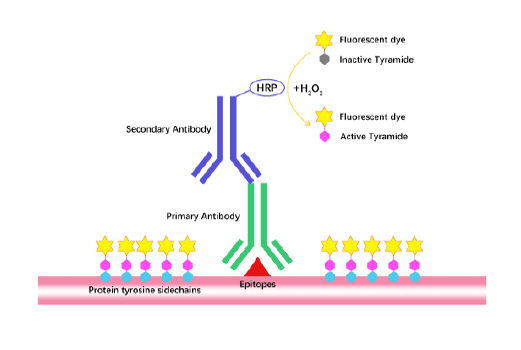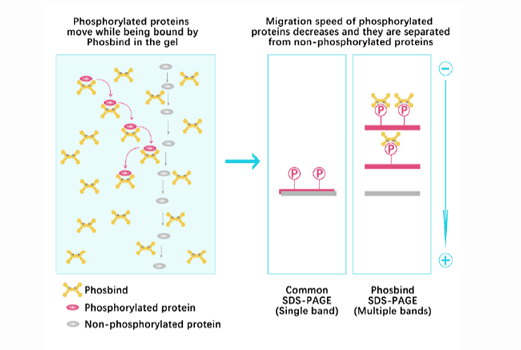Epothilone B (EPO906, Patupilone) [152044-54-7]
Referência A1630-25mg
Tamanho : 25mg
Solicitar mais informações
Por favor, faça login para usar este recurso.

TSA (Tyramide Signal Amplification), used for signal amplification of ISH, IHC and IC etc.

Separation of phosphorylated and non-phosphorylated proteins without phospho-specific antibody
Epothilone B (EPO906, Patupilone) is a naturally occurring microtubule-stabilizing macrolide that was first isolated from the myxobacterium value of Epothilone B is nM [1].
Epothilone B exhibits the same mechanism of action as paclitaxel.].
Epothilone B induced an increase in the level of the intracellular free calcium only during the longer times following the treatment in cells. Besides, the ovarian cancer cells treated with Epothilone B showed a time course dependent increase in the cytosolic fraction of cytochrome c [2].
References:
[1] Regueiro-Ren A1, Aug 23;3(17):2693-6.
[2] Rogalska A1,,. Epothilone B induces extrinsic pathway of apoptosis in human SKOV-3 ovarian cancer cells. Toxicol In Vitro. Jun;28(4):675-83.
| Physical Appearance | A solid |
| Storage | Store at -20 |
| Cas No. | 152044-54-7 |
| Formula | C27H41NO6S |
| Solubility | mg/mL in DMSO; insoluble in H2O; mg/mL in EtOH |
| Chemical Name | (1S,3S,7S,10R,11S,12S,16R)-7,11-dihydroxy-8,8,10,12,16-pentamethyl-3-[(E)-1-(2-methyl-1,3-thiazol-4-yl)prop-1-en-2-yl]-4,17-dioxabicyclo[14.1.0]heptadecane-5,9-dione |
| SDF | Download SDF |
| Canonical SMILES | CC1CCCC2(C(O2)CC(OC(=O)CC(C(C(=O)C(C1O)C)(C)C)O)C(=CC3=CSC(=N3)C)C)C |
| Shipping Condition | Small Molecules with Blue Ice, Modified Nucleotides with Dry Ice. |
| General tips | We do not recommend long-term storage for the solution, please use it up soon. |
| Kinase experiment [1]: | |
| Tubulin polymerization assay | Calf brain microtubule proteins (MTP) were purified, which included approximately 15% ~ 20% microtubule associated proteins. The buffer (MES buffer) used for the Epothilone B-microtubule studies contained 0.1 M 2-morpholinoethanesulfonic acid (MES), 1 mM EGTA, 0.5 mM MgCl2 and 3 M glycerol at pH 6.6. Samples for electron microscopy were placed on carbon-over-Parlodion-coated grids (300 mesh) and negatively stained with 2% uranyl acetate. Microtubule assembly in the presence or absence of Epothilone B was monitored spectrophotometrically by using a spectrophotometer equipped with a thermostatically regulated liquid circulator. The temperature was held at 35 nm. |
| Cell experiment [2]: | |
| Cell lines | Hs578T and Hela cells |
| Preparation method | The solubility of this compound in DMSO is > 25.4 mg/mL. General tips for obtaining a higher concentration: Please warm the tube at 37 minutes and/or shake it in the ultrasonic bath for a while. Stock solution can be stored below - 20 nM; 24 hrs |
| Applications | In Hs578T and Hela cells, Epothilone B arrested cells at the G2-M phase, causing cytotoxicity. In Hs578T cells treated with Epothilone B, there was a larger percentage (up to 38%) of cells showing multimininucleation. |
| Animal experiment [3]: | |
| Animal models | Mouse xenograft models of RPMI 8226 cells |
| Dosage form | 1-time dose at 4 mg/kg or weekly dose at 2.5 mg/kg (given on days 6, 13, 20 and 27); i.v. |
| Applications | In mouse xenograft models of RPMI 8226 cells, Epothilone B (2.5 ~ 4 mg/kg) prolonged survival and inhibited tumor growth. |
| Other notes | Please test the solubility of all compounds indoor, and the actual solubility may slightly differ with the theoretical value. This is caused by an experimental system error and it is normal. |
| References: [1]. Regueiro-Ren A1, Borzilleri RM, Zheng X, Kim SH, Johnson JA, Fairchild CR, Lee FY, Long BH, Vite GD. Synthesis and biological activity of novel epothilone aziridines. Org Lett. 2001 Aug 23;3(17):2693-6 [2]. Bollag DM, McQueney PA, Zhu J, Hensens O, Koupal L, Liesch J, Goetz M, Lazarides E, Woods CM. Epothilones, a new class of microtubule-stabilizing agents with a taxol-like mechanism of action. Cancer Res. 1995 Jun 1;55(11):2325-33. [3]. Lin B, Catley L, LeBlanc R, Mitsiades C, Burger R, Tai YT, Podar K, Wartmann M, Chauhan D, Griffin JD, Anderson KC. Patupilone (epothilone B) inhibits growth and survival of multiple myeloma cells in vitro and in vivo. Blood. 2005 Jan 1;105(1):350-7. | |
| Description | Epothilone B is a macrolide antitumor agent with microtubule-stabilizing activity. | |||||
| Targets | Hs578T cells | HeLa cells | KB3-1 cells | KBV-1 cells | ||
| IC50 | 3 nM | 32 nM | 16 nM | 92 nM | ||

